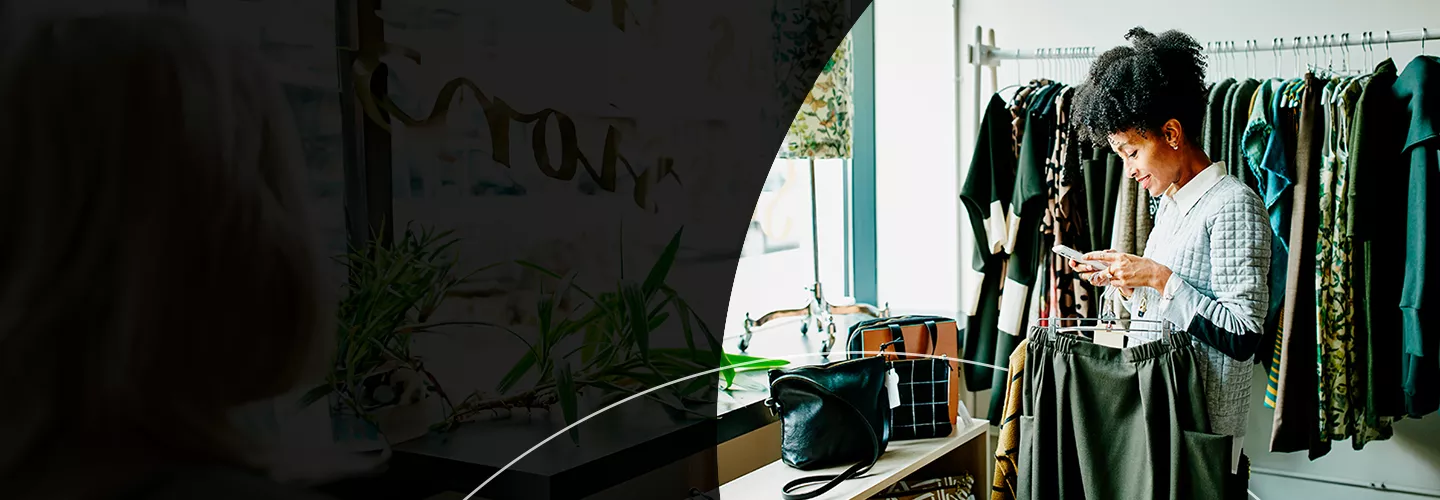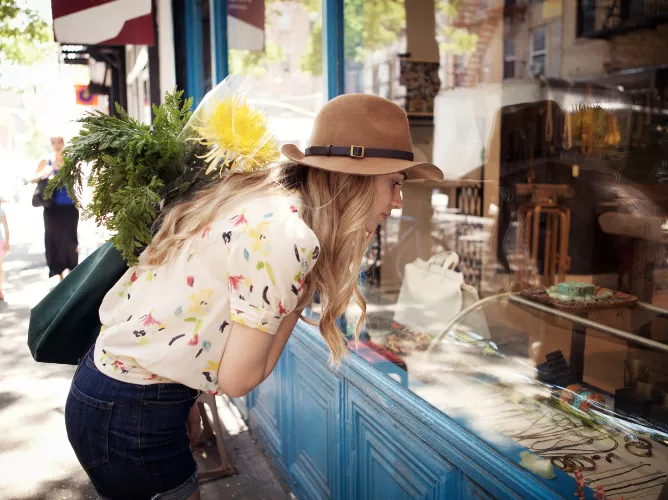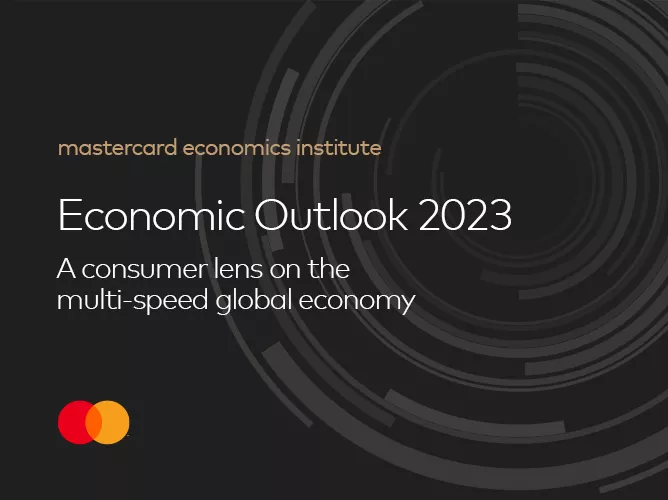By: Philip McGahey
Published: May 05, 2023 | Updated: October 29, 2025
Read time: 9 minutes
For luxury retailers, the typical customer loyalty tactics of discounts and coupons aren’t necessarily ‘on-brand.’ But that doesn’t mean that nurturing loyal customers isn’t essential to a luxury retail marketer’s repertoire – far from it. Building customer loyalty is top priority for many luxury retail marketers.
It’s not uncommon for most of a luxury brand’s revenue to come from a small percentage of customers. As a result, many focus on increasing the frequency, recency and spend of this segment. So how do they do it? Luxury loyalty programs reward customer loyalty by adding value rather than slashing prices.
In this guide on customer loyalty strategies for luxury retailers, we look at alternative strategies luxury brands can leverage to generate greater loyalty from their best customers.
- Table of contents
1. Prioritize digital
In recent years, luxury brands have bolstered their direct-to-consumer (DTC) presence. Thirty percent of online adults in the US have purchased a luxury good directly from a brand or manufacturer’s website.
However, this shift towards online retail sales for luxury products has presented a challenge for luxury brands, who traditionally placed a premium on the in-store customer experience. As a result, many took the opportunity to ensure their website experience was at least as close to parity with their in-store service as possible. In store, expertise, curation and the client-advisor relationship are critical – which should be mirrored online through a high-end and personalized site experience.
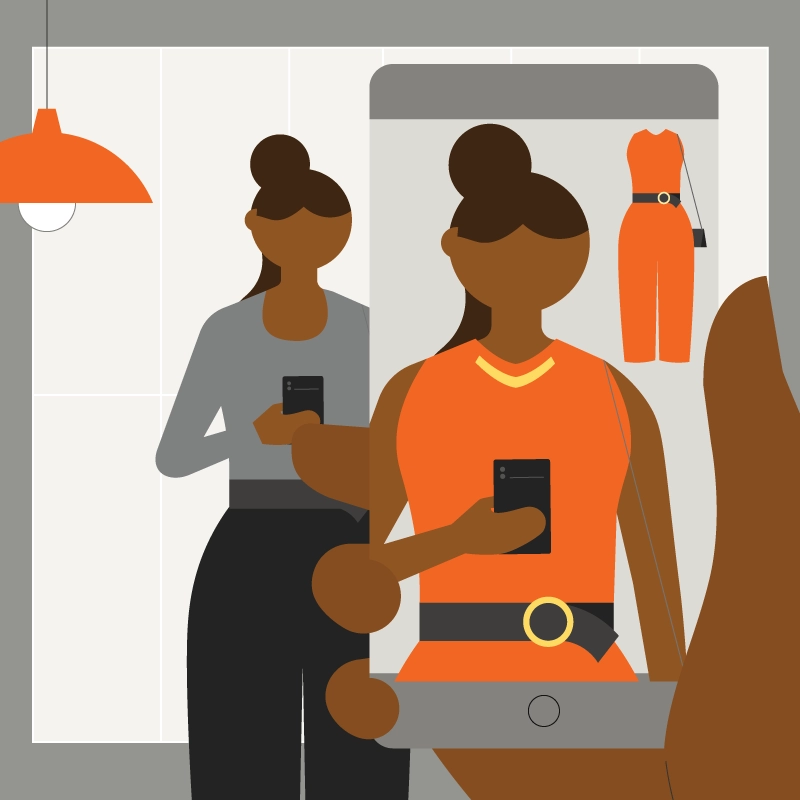
The key to a successful digital presence is ensuring it is seamlessly integrated with other channels, including physical stores.
Then, brands can consider more advanced immersive activations such as augmented reality (AR) and virtual reality (VR). These digital innovations enable companies to bring the brand to life in the comfort of a customer’s home by allowing them to visualize products, interact with associates and even try on merchandise. In the UK, over 70% of luxury fashion consumers say it’s important for brands to provide AR solutions as part of the shopping experience.
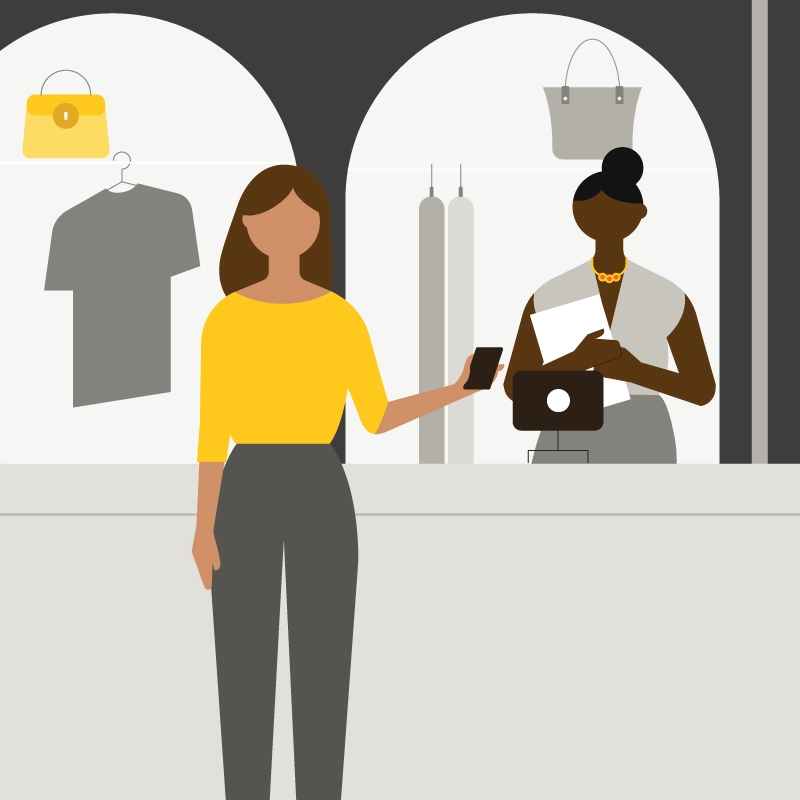
While having a strong digital presence is more important than ever, luxury retailers must also keep up with their shoppers’ expectations for an exclusive in-store experience. Physical stores provide the opportunity for customers to handle products (something luxury shoppers value) and store associates to provide personalized shopping services. In addition, as more transactions have moved online, luxury brands can tailor recommendations and offers through clienteling apps to ensure each shopper’s needs and preferences are reflected based on their most up-to-date activity with the brand.
We’ve also seen the emergence of pop-ups where brands can build highly curated spaces in locations of their choice to reach more customers. These spaces emphasize a multisensory experience to fully immerse customers in a singular shopping environment. Pop-ups can create an atmosphere of scarcity and exclusivity, which creates buzz and attention.
2. Offer VIP experiences
Loyalty programs are the most effective way of providing preferential treatment to a brand’s most valuable customers. For those valued shoppers who continue to engage and purchase from a high-end retailer, loyalty is about rolling out the red carpet. Buy-one-get-one? Not so much. Instead, provide access to exclusive events by sending your top-spending customers invites to a new store opening or fashion show. Give them access to special services like alterations and personal shopping at no additional charge.
Create customer tiers based on earning rules, allowing customers to unlock VIP benefits, including rewards, access to affiliate clubs or restaurants, or preferential parking.

The higher the perceived status is, the more likely it is that a loyalty member will partake to reap the benefits.
Retailers can also consider creating “hidden tiers.” These are defined by brands behind the scenes to identify their top-tier customers. Although these tiers are not visible to customers, they enable luxury brands to offer exclusive perks to their most loyal clients without alienating other valuable customers.
3. Make shoppers’ lives easier
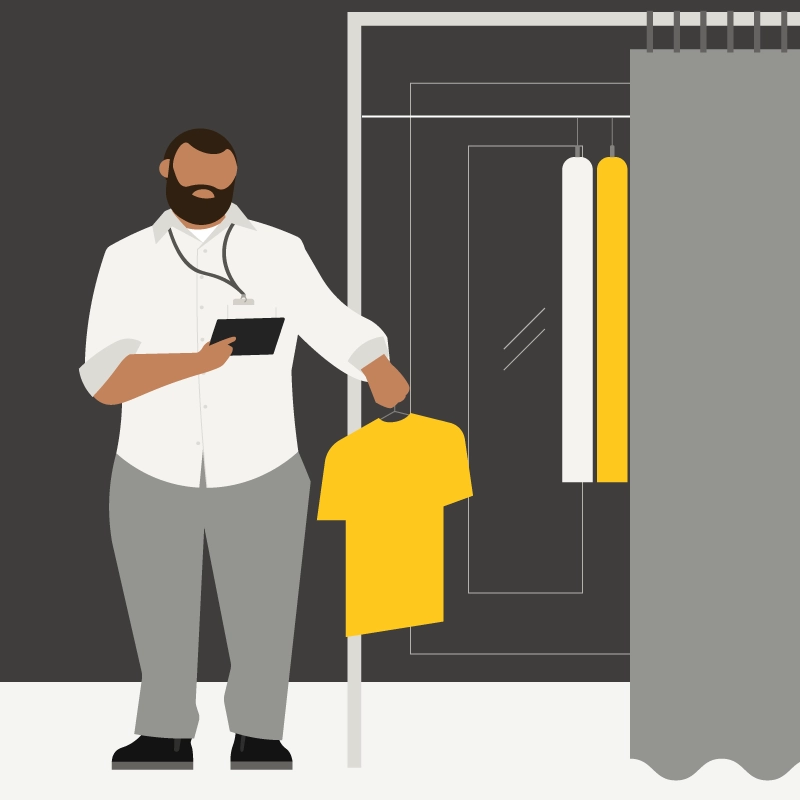
When designing a loyalty program for luxury shoppers, empowering and activating your store associates and customer service personnel with the data they need to deliver an exceptional shopping experience is critical. For example, through consented location data, retailers can give customers the ability to share with in-store employees that they are on their way to the store to try on clothes they reserved online through the app. That way, the associate can prepare a fitting room with the customer’s merchandise before the customer arrives. In addition, if the customer is open to trying on other items, associates can add items frequently purchased together or similar based on the product catalog.
Similarly, for shoppers who have their mobile devices’ location services turned on and have consented to receive brand communications such as texts or emails, brands can send timely promotions when they are near a store.
Shoppers of high-end goods expect nothing but the best in terms of the quality, prestige and aesthetics associated with purchasing a luxury brand’s products.
Personalization has become synonymous with the luxury retail space, allowing brands to double down on these in-store and online standards.
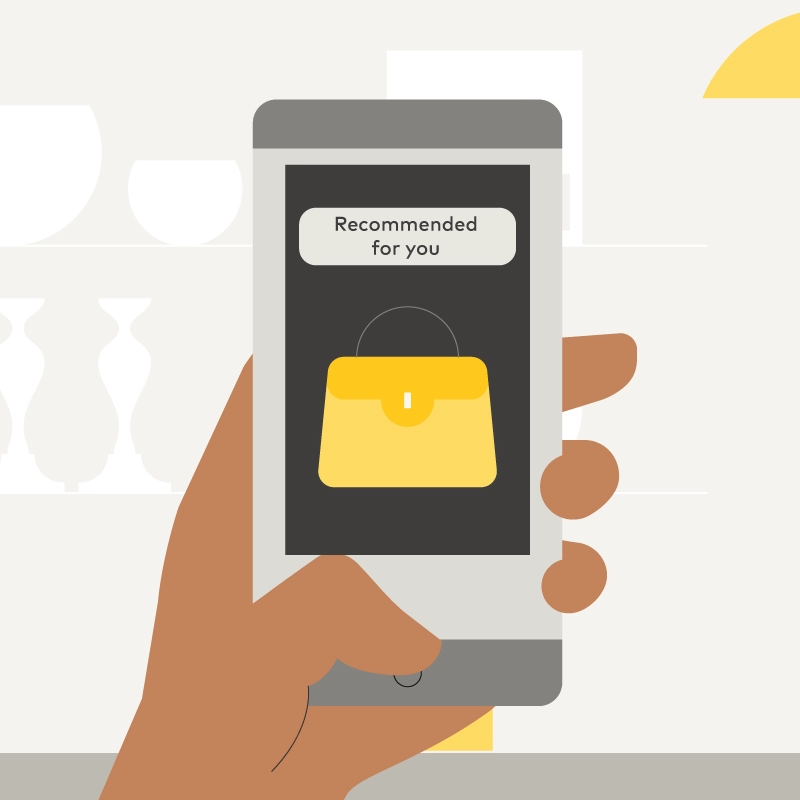
Three tenets of luxury retail personalization are:
Quality - The overall customer experience can be enhanced by ensuring high-quality products are served in a high-quality way – meaning at the individual level and according to factors such as a shopper’s purchase history, online activity and displayed affinities.
Prestige - Personalization can increase the sense of exclusivity and prestige associated with luxury shopping by offering customized or limited-edition products or by providing personalized services only available to the brand’s shoppers or for a particular tier of customer status. Nearly half of luxury fashion consumers say they would be willing to pay up to 20 percent more on in-store personalized shopping.
Aesthetics - While value derives from the brand’s unique aesthetic, teams can go a step further and help cater to each individual’s own aesthetic through greater personalization, either in the form of accurate recommendations or by offering style advice in line with their preferences.
5. Luxury brand loyalty program principles
Luxury brands may be skeptical about how applicable and relevant traditional loyalty programs are to their customers and brand image.
Here are a few guiding principles for luxury loyalty programs:
Tier-based
Programs should comprise different tiers, determined by how much a customer has spent. The program will offer different benefits and rewards based on the tier.
On brand
The program should be differentiated based on the unique ethos of your brand and difficult to replicate.
Emotionally connected
Create a program experience that fulfills the emotional needs of luxury. These include personal connection, convenience, recognition status and exclusivity.
Employee friendly
Ensure in-store employees can exceed the confines of the program structure at their discretion.
Data-driven
Deliver personalization that conveys an understanding of the customer lifestyle and individual preferences, through robust data capture beyond merely transactional behaviors, incorporating product affinities and interaction activity across channels.
Focus on lifetime value
Increase overall spend by way of frequency, cross-category and cross-channel shopping and cultivating long-term value across the customer base while also paying special attention to the important younger demographic. Of 40% of consumers who have made at least one luxury style purchase in the past year, nearly two thirds were Gen Z.
Additionally, a luxury loyalty program can overlay or complement a private-label credit card program to drive more value to credit customers, who are often the highest value and frequency customers.
6. Technology use cases
Many elements of a healthy, omnichannel loyalty strategy require an investment in technology that enables luxury retailers to gain a 360-degree, real-time view of their customers and effectively activate that data into meaningful digital experiences. With the right systems in place, luxury retailers can achieve this view and execute campaigns with the level of personalization that their customers demand.
Here are some ways to leverage marketing technology, such as a customer engagement and loyalty platform, to drive better customer interactions and create deeper brand loyalty.
E-commerce
Personalized offers use case
You want to send personalized offers to customers to enhance their experience with the brand while encouraging them to purchase merchandise from your brand’s website or mobile app based on a customer’s purchases and engagement patterns.
- How to drive more e-commerce through personalized offers?
Send a push notification or email to profiles that have never made an e-commerce purchase displaying a personalized offer (for example, something related to a brand or product category affinity) in the mobile app via mobile inbox, push notification, SMS or in a feed.
For example, the customer engagement and loyalty platform can understand and add a brand affinity like Fendi, a specific category like shoes, or sizing like size 10 Fendi shoes. In addition, customer engagement and loyalty platforms can leverage machine learning algorithms to take historical purchase data and calculate the next best offer or products a consumer will most likely to purchase.
Abandoned cart offers
You want to send personalized engagements to consumers that have added an item to their cart but still need to complete their purchase.
- How to drive more e-commerce through abandoned cart offers?
Send a push notification or email to profiles that still need to complete their e-commerce purchase with an offer for an item related to previous purchases or monitor those offers and take additional actions based on results. You can mark each profile as responding to the offer or sending follow-up communication or another offer to profiles that haven’t responded after a certain number of days.
For example, offer a VIP invite to an exclusive store opening if the customer’s lifetime value is over $20k, or give a complimentary personal shopping consultation if the person hasn’t purchased in the previous six months.
If the user has not completed a purchase within a specified period, then a series of follow-up engagements could be executed.
In-store purchases
Real-time on-premise offers
You want to send personalized, real-time offers to drive customers to purchase at the most appropriate retail location while they’re on premise.
- How to drive more in-store purchases through real time on-premise offers?
Send personalized offers to encourage customers to purchase at a retail location in the same way one can help send personalized offers to encourage customers to e-commerce purchases. Offer codes can be uniquely generated and tied to a customer profile, with redemption verified at the POS.
Real-time engagements
Custom content
You want to display content within the brand’s app relevant to the end user based on what is known about that user.
- How to drive more real-time engagement through custom content?
A customer engagement and loyalty platform can enable this by showing all content in a custom feed and weighting certain content higher as it pertains to customer behaviors, preferences or attributes. Customer engagement and loyalty platforms integrate with a content management system (CMS), allowing the platform to ingest links to content along with metadata. Marketers can build rules within the customer engagement and loyalty platform that match profile data with content metadata. For example, if a consumer’s brand preferences include Stella McCartney, then weigh Stella McCartney content higher in the feed.
As consumers log into the website or the mobile app, all content rules are executed in real time and delivered. This includes links to content within your brand’s CMS system.
Conclusion
The traditional way of thinking about loyalty is out of style and never really fits luxury brands. For luxury brands to elevate the luxury shopping experience both online and in-store, resulting in greater lifetime value among the brand’s customers, they must ensure they have the right resources - technology and people - in place to provide an incredible, tailormade experience across all their touchpoints.








